3D printing is gaining popularity in the medical field for the production of anatomical biomodels, surgical guides, and prosthetics. With the availability of low-cost desktop 3D printers and inexpensive materials, in-house or on-the-fly manufacturing of biomodels and Class II medical devices is gaining strong interest in personalized medicine. Another anticipated development in medical 3D printing for personalized medicine is the in-house production of patient-specific implants (PSI) for partial or total bone replacement, made of medical grade materials such as polyether ether ketone (PEEK).
The results of a joint study by teams from the Department of Hand Surgery at BCBS, the Department of Oral and Craniomaxillofacial Surgery at the University Hospital Basel, the Department of Hand Surgery at the Cantonal Hospital Graubünden, and the Department of Biomedical Engineering at the University of Basel show us the first in-hospital 3D printed scaphoid prosthesis using medical-grade PEEK and fused deposition (FDF) 3D printing technology. The paper, "In-Hospital 3D Printed Scaphoid Prosthesis Using Medical-Grade Polyetheretherketone (PEEK) Biomaterial," was published online January 11, 2021. The paper, "In-Hospital 3D Printed Scaphoid Prosthesis Using Medical-Grade Polyetheretherketone (PEEK) Biomaterial," was published online on January 11, 2021, in PubMed Central ® (PMC).
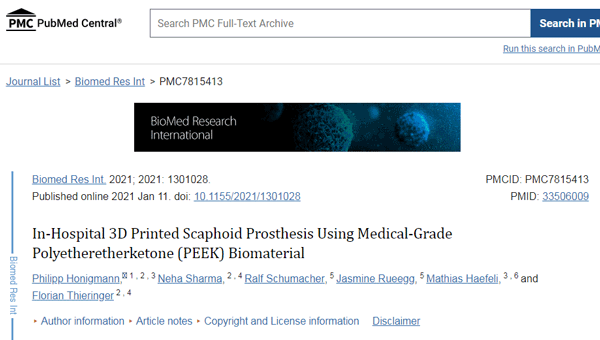
1.Introduction
Medical 3D printing has changed the current era of personalized medicine with its advanced utility and applications. With the use of consumer-grade desktop 3D printers in hospitals, 3D printing offers a variety of medical and clinical applications, including but not limited to anatomy, pathological fracture and tumor biomodels, custom surgical tools and prosthetic aids. The technology enables the construction of 3D objects by creating complex, customized anatomical and medical structures defined in computer-aided design (CAD) digital files. In the basic technical setup, two-dimensional (2D) Digital Imaging and Communications in Medicine (DICOM) medical imaging datasets are converted to 3D data, which is then transferred to a 3D printer. Illustration of an internal 3D printed biomodel for a distal intra-articular radius fracture case, fabricated by fused deposition (FFF) 3D printing technique using cone-beam computed tomography (CBCT) DICOM dataset.
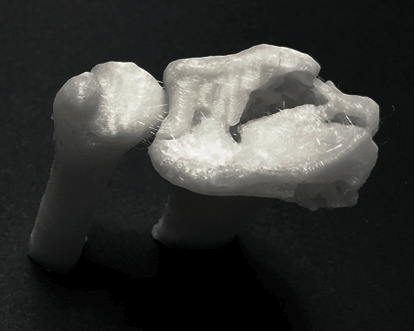
▲Figure 1: Fracture model printed with an FFF consumer-grade desktop 3D printer (MakerBot Replicator+, MakerBot Brooklyn, New York City, New York, USA)
With the significant shift from older mass production systems to PSI production systems for medical implants, 3D printing has taken on a significant role in the medical implant manufacturing industry. Considering the evolving technological trends in personalized medicine, we investigated the feasibility of printing medical-grade polyetheretherketone (PEEK) biomaterials, specifically for the production of PSI in hospital settings. Our preliminary results are promising and could help advance the development of FFF polyetheretherketone 3D printers specifically designed for medical polyetheretheretherketone applications.PEEK as a printable material for PSI meets the criteria for the orthopedic field. It is a lightweight, biocompatible, non-toxic and non-flammable biomaterial with excellent mechanical strength .PEEK's osteoconductive properties support the osseointegration process. In addition, PEEK is ray-permeable in X-ray imaging without associated artifacts, providing computed tomography (CT) and magnetic resonance imaging (MRI) compatibility.These inherently advantageous properties of PEEK, along with the ability to print medical-grade PEEK in certified 3D printers, make this material an attractive 3D printed PSI suitable for hospital or just-in-time manufacturing choice . Therefore, in this article, we present preliminary results of the first in-hospital 3D printing of a navicular bone prosthesis made from medical-grade PEEK manufactured by material extrusion (FFF) 3D printing.
2、Materials and Methods
2.1、Computer-aided design modeling of navicular bone prosthesis
The anatomy department provided a well-preserved wrist joint with no degenerative changes or post-traumatic alterations. Multilayer CT scans (Biograph mCT Flow™, Siemens Medical Solutions USA, Malvern, USA) were used to acquire the DICOM dataset. the DICOM files were processed in medically certified image processing software (Mimics®, Materialise, Leuven, Belgium) to generate a 3D volumetric reconstruction model of the navicular bone. The surface of the generated 3D model was smoothed and a mesh repair procedure, such as fixation of the holes, was performed in CAD software (3DS Geomagic Freeform®, Rock Hill, USA) (Figure 2). Finally, a curved channel was designed inside the 3D model of the navicular bone (Fig. 3). Finally, the CAD file of the designed prosthesis was converted and saved in standard (STL) file format.

▲Figure 2: Surface smoothness of the navicular bone prosthesis: (a) natural; (b) filled hole; (c) final smooth surface

▲Figure 3: Design of curved channels in the navicular bone prosthesis
The FFF 3D printer used to make the navicular bone prosthesis was the Apium M220, a desktop printer specifically designed for PEEK medical additive manufacturing. (Apium Additive Technologies GmbH, Karlsruhe, Germany) (Figure 4). It is designed to produce PSI in a hospital environment according to biocompatibility standards. the printer employs an advanced temperature management system that controls the temperature during the printing process in a layer-by-layer manufacturing approach. In addition, to prevent contamination, a continuous inflow of hot air is integrated into the printer to filter the air around the 3D printed parts during the manufacturing process.
▲Figure 4: Bio-grade PEEK 3D printer
2.3、Medical grade PEEK wire
Due to the physical properties of PEEK biomaterials, FFF 3D printing is challenging and often requires an iterative process to print test samples. Therefore, the feasibility study of printing a PEEK navicular bone prosthesis using industrial grade 1.75 mm PEEK filament (Apium 4000 natural) was initially performed from an economic standpoint. Once identified, a medical grade 1.75 mm diameter PEEK filament developed by Vestakeep® i4G resin (Evonik Vestakeep® i4G resin, Evonik Industries AG) was used to manufacture the fabrication of the navicular bone prosthesis. This filament is an implant-grade material that meets standard specifications for polyether ether ketone (PEEK) polymers for surgical implants. It is a natural-colored, high-viscosity, high-performance PEEK polymer that is widely used in long-term implantable medical devices. The material is supplied directly as filaments on a spool or as cylindrical pellets for extrusion (FFF) processing techniques to make PEEK filaments. Medical grade PEEK filaments have a density of 1.30 g/cm³, a melting temperature of approximately 340°C, and a glass transition temperature of 135-155°C. In addition, the material is highly resistant to gamma radiation, stable against hydrolysis, and suitable for autoclaving.
▲Figure 5: Evonik Vestakeep®-i4-3DF-T
2.4、Bio-grade PEEK 3D printing process parameters
The STL file of the navicular bone prosthesis was imported into the slicing software (Simplify 3D version 4.0). To prevent collapse and to ensure its printing, a temporary support structure was generated under the prosthesis in the software (Figure 6(a)).
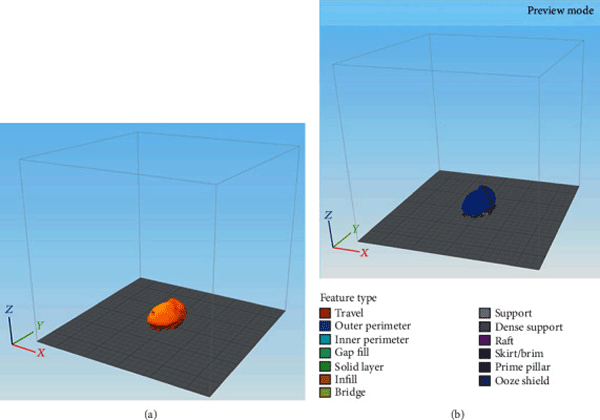
▲Figure 6: Orientation of the navicular bone prosthesis in the 3D slicing software on the 3D printer build platform: (a) adding the support structure; (b) generating G-code with the selected printing parameters
Finally, the STL file is digitally sliced with the appropriate printing parameters to generate a G-code file, which is then sent to the 3D printer for printing. The printing parameters used for light-colored industrial PEEK (Apium PEEK 4000) were similar to those used for dark-colored medical-grade PEEK filament (Evonik Vestakeep® i4G resin). To increase the adhesion between the navicular prosthesis and the print bed, an automatic raft generation function integrated in the printer software was used.
2.5、Bio-grade PEEK 3D printed PEEK navicular bone prosthesis printing parameters

3、Results
The total printing time for each navicular bone prosthesis was 1 hour and 52 minutes. After printing, the support structure was manually removed and wear marks on the prosthesis were trimmed off. The print of the prosthesis shown in Figure 7 was made without further post-processing. The navicular bone prosthesis on the left (light color) was printed with industrial grade PEEK filament (Apium 4000), while the prosthesis on the right was printed with medical grade implantable PEEK biomaterial (Evonik Vestakeep® i4 G resin). No black spot formation or discoloration (undue crystallization) was observed in the test parts. Unlike industrial grade 3D printed PEEK navicular bone prostheses, the surfaces of the medical grade PEEK printed versions did not exhibit the classic "FFF stepping" phenomenon. In addition, the edges of the articular surfaces and access ports are smoother, a must for articulating with cartilage and guiding tendon grafts in a frictionless manner.
▲Figure 7: Navicular bone prosthesis made of industrial grade (light) and medical grade (dark) PEEK: (a) radial aspect; (b) ulnar aspect; (c) exit hole with proximal access
4、Conclusion
The experimental results demonstrate the potential for additive manufacturing of biocompatible and implantable polymers, such as PEEK, and in our case, demonstrate that more complex geometries of joint implants can be produced in a hospital setting.
Article Source:https://www.ncbi.nlm.nih.gov/pmc/articles/PMC7815413/
In 2021 Skåne University Hospital released a case report of 3D printing and implantation at the hospital. It was highly regarded as the first hospital in the world to print a skull implant on site using a PEEK 3D printer and successfully implant it in a patient. The printer used was also Apium's bio-grade PEEK 3D printer and Evonik's implant-grade filament material. As Apium's distribution partner in China, we have many years of experience in 3D printing PEEK implants, and we have a complete set of data analysis and personalized solutions, so feel free to ask us if you need them.




























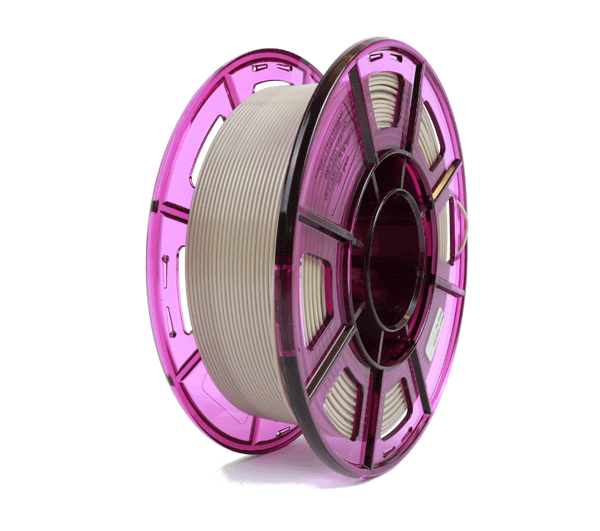

 Home
Home Telephone
Telephone Message
Message







